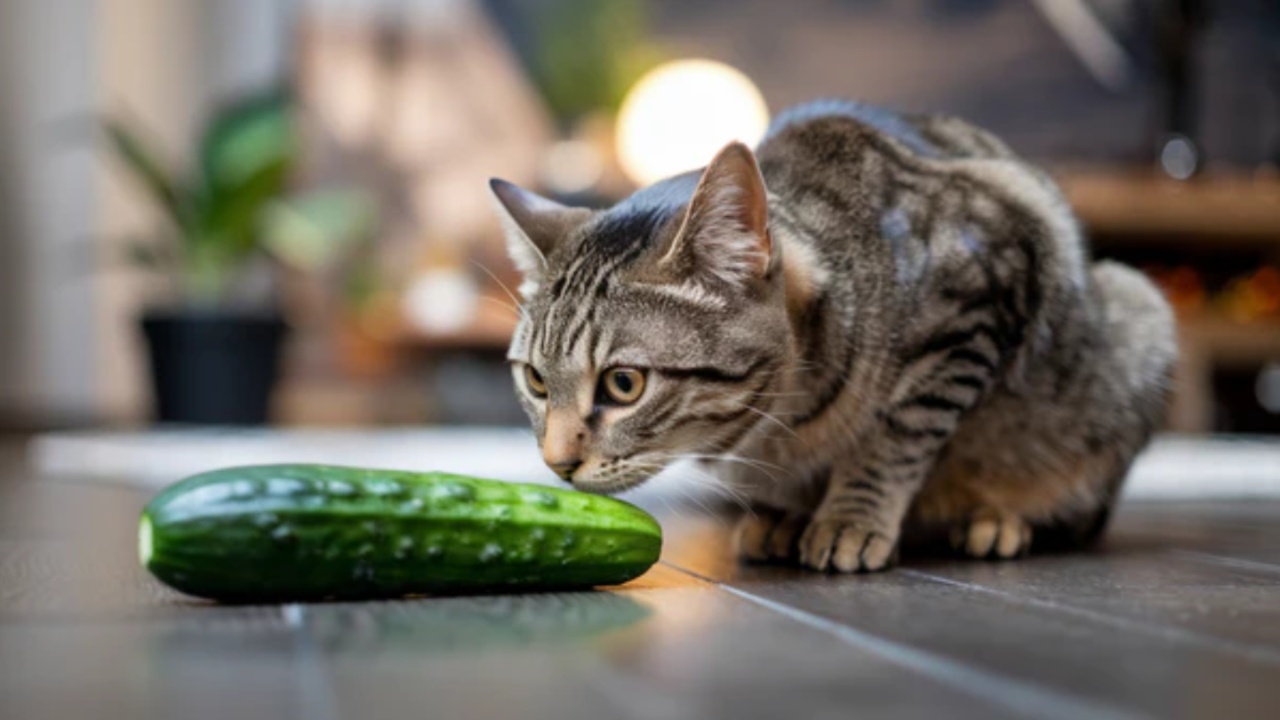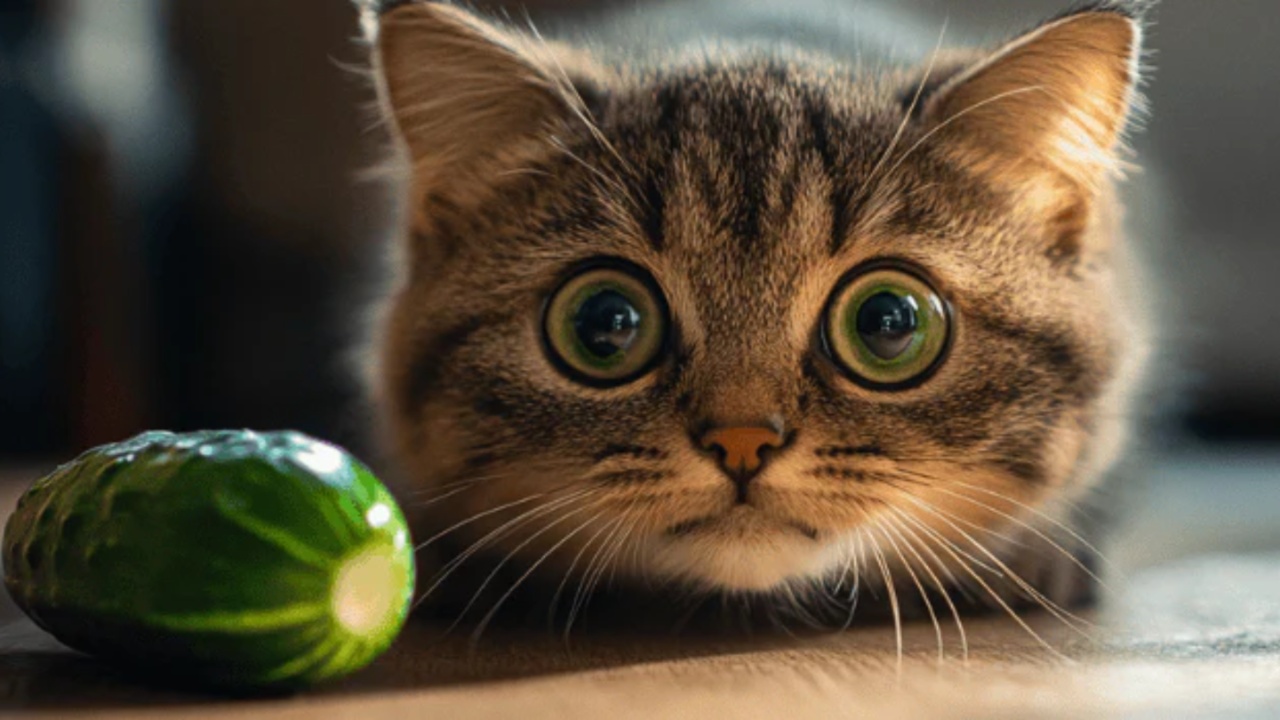Many social media users have seen videos of cats reacting dramatically to cucumbers placed behind them while they are eating. In these viral clips, cats appear to be terrified, jumping, skittering, and sometimes reaching exaggerated heights to escape. These reactions have led many to believe that cucumbers are inherently scary to cats. However, experts in feline behavior have a different perspective on what’s actually happening in these videos.
Cats’ Fear of Cucumbers: Instinctive Reactions to Unexpected Threats in Their Environment
While it’s easy to assume that cats fear cucumbers, behavior experts like Katenna Jones argue that the fear isn’t necessarily about the cucumber itself. Instead, the true cause lies in the situation set up by their owners. Cats, being prey species, are highly alert and instinctively on edge in unfamiliar situations, especially when their backs are turned.
The sudden appearance of a large object like a cucumber can trigger an extreme reaction, not because the cat inherently fears cucumbers, but because they perceive it as a potential threat in their environment.

Cats’ instincts as prey animals drive their heightened awareness of potential threats. When a cat feels safe enough to eat in a relaxed posture, they lowers their guard, only to be startled by a large, unfamiliar object behind it.
The cucumber may resemble something dangerous, like a snake, but experts like Jones suggest that the real reaction stems from the cat’s instinct to protect itself from perceived danger when it feels vulnerable. This surprise causes the cat to leap into defensive action, much like a human being startled by an unexpected scare.
Stress from Scaring Cats: Long-Term Effects and Health Consequences of Fearful Experiences
Both Jones and Jane Ehrlich, another feline behaviorist, emphasize that these videos illustrate significant stress for the cats. The behaviors—jumping, puffing up, and arching their backs—are typical fear responses. If these kinds of experiences happen occasionally, the cat may recover without lasting issues.
However, repeated stress can lead to long-term problems, including compulsive behaviors, aggression, and physical ailments like digestive or skin issues. Over time, it could even damage the bond between a cat and its owner.
Instead of scaring your cat for entertainment, experts suggest engaging in more positive and enjoyable activities. Giving cats control over their environment, such as allowing them to leave when they wish, can create a healthier bond. Understanding their individual preferences and playing with them in ways that mimic natural prey can help enrich their lives.
For example, some cats enjoy playing with toys that resemble small prey like lizards or birds. Ultimately, fostering a trusting relationship with your cat through positive interactions is the best way to enjoy each other’s company without causing unnecessary fear.


